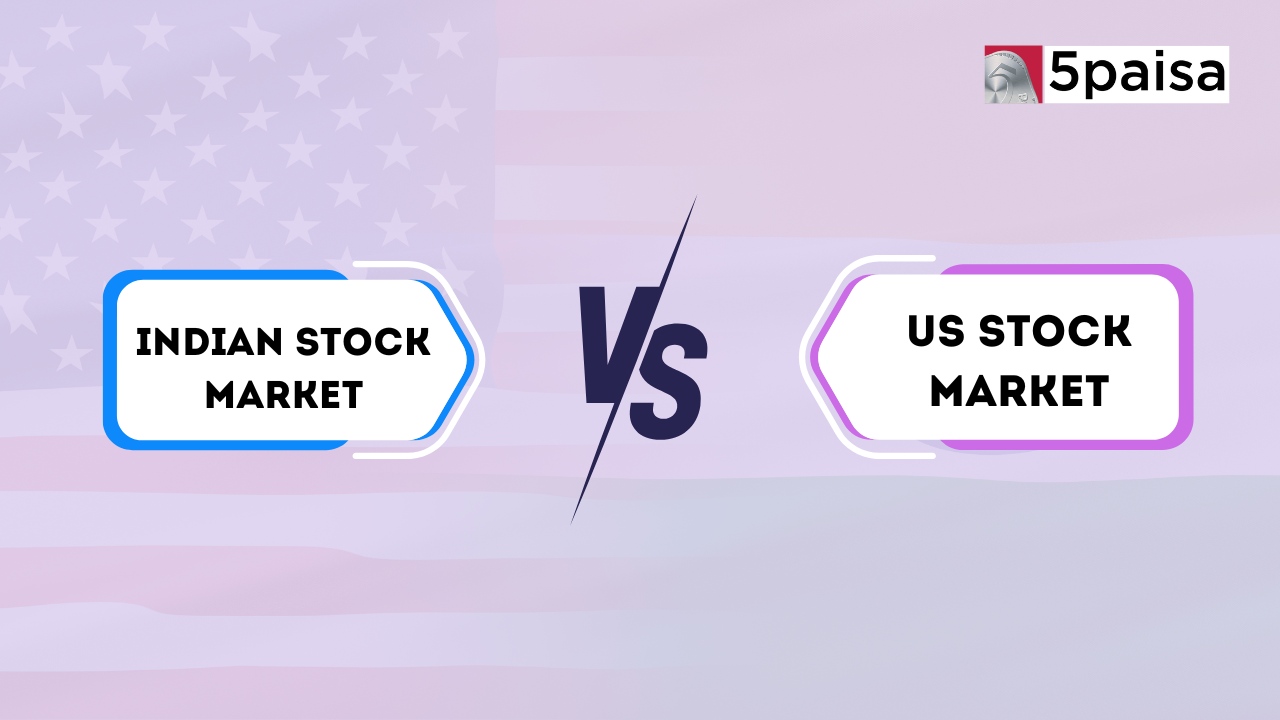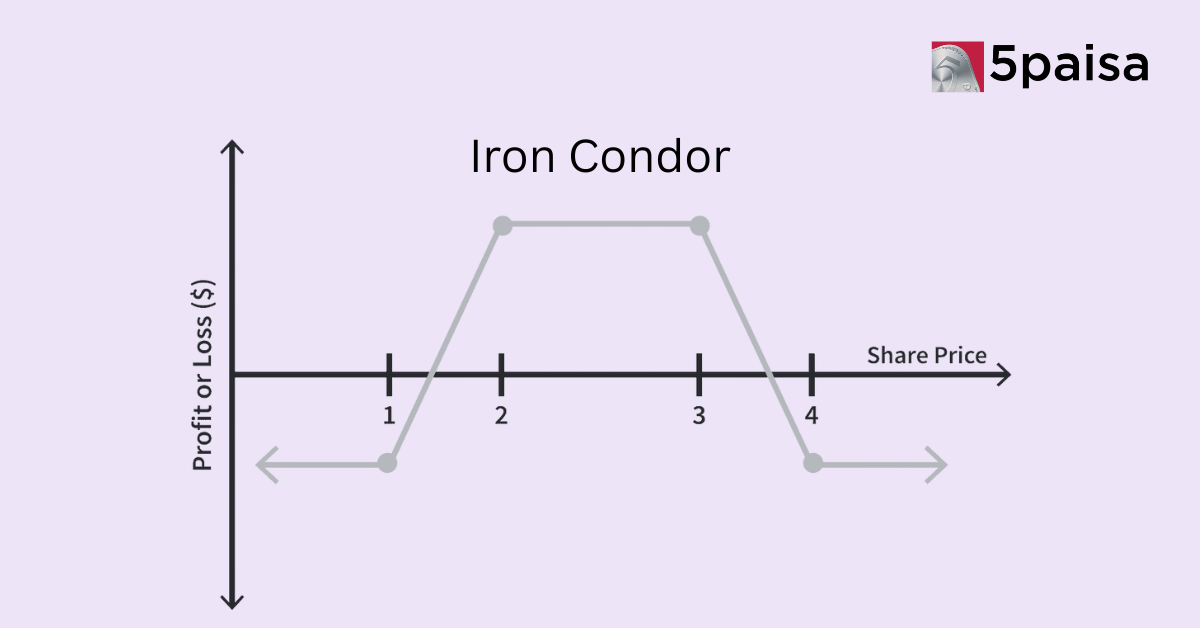Social Media Scams: SEBI Warns of Financial Scams on Social Media
Indian vs US Stock Market: A Comprehensive Comparative Analysis

Get exposure to global market potential by strategically balancing your investments between India’s emerging economy and the U.S.’s innovation-driven growth.
Investing has become a global endeavour, granting investors unprecedented access to emerging and established markets. With the rise of globalisation and user-friendly trading platforms, many are now considering whether to invest in the Indian or U.S. stock markets.
If you’ve ever debated the difference between the Indian stock market and the U.S. stock market, you’re not alone. India, with its robust economic growth, offers exciting opportunities. On the other hand, the U.S. stock market represents stability and global leadership.
In this blog, we’ll conduct a detailed analysis of the Indian stock market vs. the U.S. stock market, exploring key differences, opportunities, risks, and strategies to help you make an informed decision.
Let’s dive in and uncover where you should place your bets.
Understanding the Difference Between the Indian and U.S. Stock Markets
What is the Indian Stock Market?
The Indian stock market is one of the fastest-growing markets globally, known for its vast array of companies and high potential for returns.
Bombay Stock Exchange (BSE):
Established in 1875, it is Asia's oldest exchange.
Lists over 5,000 companies across industries like IT, pharmaceuticals, and FMCG.
National Stock Exchange (NSE):
Introduced in 1992, it revolutionized electronic trading in India.
Tracks the Nifty 50, an index of the top-performing companies in India.
Market Capitalization
U.S. Stock Market: The U.S. stock market boasts a market capitalization exceeding $40 trillion, housing global leaders across technology, healthcare, and consumer goods.
Indian Stock Market: India's stock market has a market capitalization of approximately $3.5 trillion, reflecting its status as an emerging economy with significant growth potential.
What is the U.S. Stock Market?
The U.S. stock market dominates the global financial landscape, offering unparalleled access to blue-chip and innovative companies.
New York Stock Exchange (NYSE):
The largest exchange globally by market capitalization.
Features industry giants like Apple, Amazon, and Microsoft.
NASDAQ:
Known for its tech-heavy focus, hosting companies like Tesla, Meta, and Alphabet.
U.S. indices such as the S&P 500, NASDAQ Composite, and Dow Jones Industrial Average (DJIA) serve as key benchmarks for global investors.
Weigh the potential of high-growth opportunities in India against the stability and innovation of the U.S.—and make smarter investment decisions.
Key Differences Between the Indian Stock Market and U.S. Stock Market
| Feature | U.S. Stock Market | Indian Stock Market |
| Market Capitalization | Over $40 trillion | Approximately $3.5 trillion |
| Key Stock Exchanges | NYSE, NASDAQ | BSE, NSE |
| Key Indices | S&P 500, NASDAQ Composite, Dow Jones Industrial Average | Nifty 50, Sensex |
| Trading Hours | 9:30 AM - 4:00 PM EST (Pre-market and after-hours trading available) | 9:15 AM - 3:30 PM IST (No after-hours trading) |
| Investor Demographics | Predominantly institutional investors, strong retail participation | High retail investor participation (45% of market activity) |
| Regulatory Authority | Securities and Exchange Commission (SEC) | Securities and Exchange Board of India (SEBI) |
| Volatility | Lower volatility due to a stable economy, but susceptible to global events | Higher volatility, with growth opportunities but political/economic risks |
| Dividends | Steady returns through blue-chip stocks like Apple, Coca-Cola | Limited but increasing dividend-paying companies like Infosys, and HDFC Bank. |
1. Market Size and Capitalization
U.S. Stock Market:
Boasts a market cap exceeding $40 trillion.
Houses global leaders across technology, healthcare, and consumer goods.
Indian Stock Market:
Smaller, with a market cap of $3.5 trillion.
Reflects India's emerging economy and untapped growth potential.
2. Trading Hours
India: 9:15 AM to 3:30 PM IST (Monday to Friday).
U.S.: 9:30 AM to 4:00 PM EST, with additional pre-market and after-hours trading.
3. Investor Demographics
India:
Retail investors drive nearly 45% of market activity.
Supported by domestic and foreign institutional investors.
U.S.:
Dominated by institutional investors like mutual funds and hedge funds.
Strong participation from an educated retail investor base.
4. Regulatory Framework
India:
Governed by the SEBI.
Focuses on investor protection and transparency.
U.S.:
Overseen by the Securities and Exchange Commission (SEC).
Enforces global compliance standards.
Also Read: Benefits of Diversification by Investing in Silver ETFs
Global Market Access: A Growing Trend
In recent years, global market access has become a cornerstone of modern investing. With the advent of technology and seamless trading platforms, investors are no longer limited to their domestic markets.
The ability to invest in the Indian stock market vs. the U.S. stock market offers a unique chance to diversify portfolios and mitigate risks associated with economic downturns in a single region.
For instance, Indian investors can leverage U.S. market stability to safeguard against local volatility, while U.S.-based investors can tap into India’s growth story to enhance their overall returns. This cross-border approach provides opportunities to benefit from complementary economic cycles and market dynamics.
Emerging Technologies and Sector-Specific Growth
Indian Stock Market:
India's focus on emerging technologies such as artificial intelligence, fintech, and renewable energy is creating a dynamic investment landscape.
Government initiatives like the “Make in India” campaign and incentives for clean energy projects provide additional momentum. Sectors like IT, pharma, and renewables are anticipated to deliver high returns in the coming decade, with companies like Infosys, TCS, and Dr. Reddy’s Laboratories leading the charge.
U.S. Stock Market:
On the other hand, the U.S. market is a hotbed for innovation in AI, electric vehicles, and biotechnology. Companies like Tesla, NVIDIA, and Moderna are not only industry leaders but also provide exposure to cutting-edge advancements.
Moreover, the rise of ETFs and fractional investing has made these growth sectors more accessible to retail investors worldwide.
Economic Growth vs. Economic Stability
India’s GDP growth rate, consistently surpassing 6%, reflects its status as an emerging economic powerhouse. However, this rapid growth comes with inherent risks such as policy changes and global dependencies. The U.S., with its mature economy, delivers slower but more predictable growth, making it ideal for long-term wealth preservation.
Choosing between the Indian stock market vs. the U.S. stock market ultimately depends on whether you prioritize rapid expansion or steady returns. By strategically balancing exposure to both, you can enjoy the best of both worlds.
Investment Opportunities in the Indian and U.S. Stock Markets
Indian Stock Market
The Indian market presents lucrative opportunities in high-growth sectors:
Information Technology (IT): Companies like TCS and Infosys are global leaders.
Banking & Finance: Digital banking and fintech innovations are booming.
Pharma: India dominates the global generics market and is expanding in biosimilars and vaccines.
Renewable Energy: Government initiatives and private investments are driving growth in solar, wind, and other clean energy sectors.
U.S. Stock Market
The U.S. market offers a wide range of stable and innovative options:
Technology: Apple, Google, and Microsoft lead global tech trends while emerging players in AI and robotics are gaining momentum.
Healthcare: Cutting-edge biotechnology and pharmaceuticals, with companies like Moderna and Pfizer, are at the forefront of medical advancements.
Consumer Goods: Brands like Coca-Cola, P&G, and McDonald’s provide consistent dividends and steady growth.
Electric Vehicles (EVs): Companies like Tesla and Rivian are spearheading the global EV revolution.
Must Read: All You Need to Know About Investing in US Stocks
Market Dynamics: Volatility and Returns
Indian Market:
Volatility: Higher due to political and economic changes, but this also offers opportunities for higher returns.
Growth Potential: Best for investors willing to take calculated risks for substantial returns.
U.S. Market:
Stability: A mature and highly regulated economy ensures consistent performance.
Returns: Blue-chip stocks and ETFs often deliver steady growth and regular dividends, appealing to conservative investors.
Currency Risks for Indian Investors
Investing in the U.S. market involves currency exchange risks. A depreciating Indian rupee against the U.S. dollar can boost returns but introduces volatility. Keeping an eye on currency trends and hedging strategies can help mitigate risks.
Key Trends Shaping Both Markets
Indian Stock Market:
1. Rise of Retail Investors: Investment platforms are simplifying access to equity markets, leading to a surge in first-time investors.
2. Growth in ESG Investing: Companies with strong environmental, social, and governance practices are attracting investor interest.
3. Government Initiatives: Schemes like PLI (Production Linked Incentives) are boosting manufacturing and exports, opening new investment avenues.
U.S. Stock Market:
1. Fractional Investing: Investors can buy partial shares of expensive stocks, making the U.S. market more accessible to retail investors worldwide.
2. Tech Boom: AI, cloud computing, and blockchain are reshaping industries, presenting unparalleled growth opportunities.
3. Sustainable Investing: ESG-focused funds and green technologies are gaining traction, appealing to socially conscious investors.
How to Decide: Indian Stock Market or U.S. Stock Market?
1. Risk Appetite:
The Indian market is generally considered higher risk but with the potential for high rewards, making it a compelling option for those with a greater risk appetite.
On the other hand, the U.S. market is often associated with stability and more predictable returns, which may appeal to investors seeking a steadier approach.
Ultimately, the choice depends on your individual goals and risk tolerance.
2. Diversification:
Combining investments in both markets can help mitigate regional risks and achieve a balanced portfolio.
3. Investment Goals:
High-growth sectors like IT and renewables in the Indian market offer exciting opportunities, while the U.S. market provides exposure to global innovation and the stability of blue-chip companies.
These are areas worth considering, but the choice is yours—we’re here to offer guidance tailored to your goals.
Conclusion
The decision between the Indian and U.S. stock markets boils down to your investment objectives, risk tolerance, and diversification strategy. Both markets offer unique opportunities: India for high growth and the U.S. for innovation and stability.
For the best results, consider adopting a dual-market strategy. By understanding the nuances of the Indian stock market vs. the U.S. stock market, you can create a diversified portfolio tailored to your financial goals.
Start investing today and take a step closer to unlocking the potential of global markets!
Frequently Asked Questions
What are the key differences between the Indian and US stock markets?
How do trading hours differ between the Indian and US stock markets?
What are the major stock exchanges in India and the US?
In India, the main exchanges are the Bombay Stock Exchange (BSE) and the National Stock Exchange (NSE). In the US, the major exchanges are the New York Stock Exchange (NYSE) and NASDAQ.
How do market regulations differ between India and the US?
What factors affect stock market performance in India and the US?
- Flat ₹20 Brokerage
- Next-gen Trading
- Advance Charting
- Actionable Ideas
Trending on 5paisa
01
 5paisa Research Team
5paisa Research Team
Indian Stock Market Related Articles
Disclaimer: Investment in securities market are subject to market risks, read all the related documents carefully before investing. For detailed disclaimer please Click here.

 Sachin Gupta
Sachin Gupta




